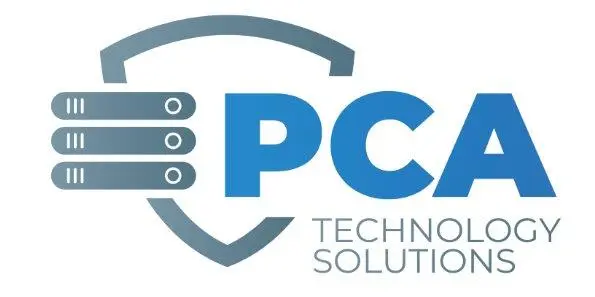Finish Strong: Your 4th Quarter Planning For 2025
Unlock the secrets to a successful year-end strategy with insights and trends that will shape your business’s future.
What are some of the top trends in the workplace to consider for 2025? Who better to turn to than Gartner – the leader in technological research.
Four-day work weeks
Managers that both lead AND manage
Skills prioritized over paper
GenAI creating new roles and driving efficiencies
The 4th quarter is nearing its end and it’s time to finish strong. It’s time for reaching our goals, focusing on successes, pivoting to address misses, and preparing to do it all over again. I hope that 2024 was as successful for you as you had hoped it would be. Now is the time to get your company prepped for an even better 2025.
Since our experience is in technology, we’ll focus simply on that. However, I’m happy to have an overall conversation with you about how we have scaled at PCA and why we believe in our processes.
Some of these trends may not fit in well with your end-of-the-year plan. You may be so laser focused on hitting your targets or accomplishing what you’ve set out to do that making changes of this magnitude would derail those plans.
From a technology perspective, this is where a trusted technology coach comes into play.
You’re in the 4th quarter down 6. The best plan of action is to have a partner that knows the winning game plan. In many cases, technology is the answer to drive efficiency, increase accountability, and provide the results that you need to accomplish those goals that may seem unreachable at this point.
Organizations need to understand the value of investing in technology.
In fact, it’s trending. Years ago, when the offices were full and the water coolers were booming with energy, organizations were looking for ways to make the office “fun.” From bean bag chairs to ping pong tables, investments were made in areas that likely didn’t pay the dividends you may have hoped or expected.
Today, investing in efficiency and focusing on business outcomes allows you to accomplish both a stronger bottom line but also hit these workplace trends:
-
- If you can accomplish 5 days of work in 4 days while still hitting your goals, would you have a happier team?
- What about teammates that were both led and managed with an attempt towards their success?
- Perhaps you invest in your team or focus on new teammates that have a skillset that enhances your overall delivery?
- And of course, what if you could leverage AI in a way that helps your business go to another level?
These are questions that we believe businesses should be asking as they head into 2025. And in our opinion, it all starts and ends with technology.
Still not sure how? Call us – we’d love to discuss it.
End-of-Year Planning
Best Practices for End-of-Year Business Planning

As the year draws to a close, it’s crucial to implement effective strategies to ensure a strong finish.
Here are five best practices to consider:
1. Review and Reflect on the Past Year
-
- Analyze Performance Data: Scrutinize key performance indicators (KPIs), financial statements, sales reports, marketing analytics, and customer feedback to identify what worked well and what needs improvement.
- Conduct Employee Evaluations: Gather feedback from your team regarding their accomplishments, challenges, and areas for growth. This information can help identify training needs and potential leadership opportunities.
- Evaluate Your Goals: Assess whether you achieved the goals you set at the beginning of the year and identify any roadblocks that hindered progress.
2. Set SMART Goals for the Coming Year
-
- Specific: Define clear and concise objectives.
- Measurable: Establish quantifiable metrics to track progress.
- Achievable: Set realistic and attainable targets.
- Relevant: Ensure goals align with your overall business strategy.
- Time-Bound: Set deadlines for achieving each goal.
3. Develop a Detailed Plan
-
- Create a Budget: Forecast revenue and expenses for the upcoming year.
- Outline Marketing and Sales Strategies: Identify your target audience, develop marketing campaigns, and set sales targets.
- Plan for Operational Improvements: Identify areas where you can streamline processes, increase efficiency, and reduce costs.
- Invest in Technology: Evaluate and implement technology solutions that can support your growth and improve operations.
4. Prioritize Communication and Collaboration
-
- Involve Your Team: Engage your employees in the planning process, seeking their input and ideas. This will foster a sense of ownership and commitment.
- Communicate Your Vision: Clearly articulate your goals and expectations for the coming year to your team.
- Foster Collaboration: Encourage open communication and teamwork to facilitate innovation and problem-solving.
5. Remain Agile and Adaptable
-
- Monitor Progress Regularly: Track your progress toward goals and make adjustments as needed.
- Be Prepared for the Unexpected: Anticipate potential challenges and develop contingency plans.
- Embrace Change: Be open to new ideas and opportunities and be willing to adapt your strategies as the business environment evolves.
End-of-year planning
Additional Tips
Remember, the end-of-year planning process is an opportunity to reflect on the past, envision the future, and set your business on a path toward continued success.
By following these best practices and incorporating these additional tips, you can create a comprehensive plan that will guide your business toward achieving its goals in the coming year.
- Consult with Experts: Seek advice from financial advisors, legal counsel, or industry consultants.
- Stay Current on Industry Trends: Keep abreast of the latest developments in your industry and adapt your strategies accordingly.
- Celebrate Successes: Recognize and reward your team for their hard work and accomplishments.
Workplace Trends 2024
What were some of the top trends in the workplace in 2024?
Focus on Skills Building: Upskilling and reskilling initiatives are essential as technology rapidly advances. Companies are investing in employee development to bridge the skills gap and stay competitive.
Equitable Flexibility: The hybrid and remote work models are becoming more established. Organizations are focusing on creating equitable experiences for both in-person and remote employees.
Emphasis on “Deskless” Workers: Frontline and essential workers, often overlooked in the past, are gaining more recognition and support. Companies are seeking ways to enhance their experience and engagement.
Rewarding Resilience: Agile and adaptable employees are highly valued in a constantly changing environment. Companies are looking to reward those who can navigate challenges and uncertainty.
Evolving Change Management: Companies recognize the need for improved change management strategies to effectively implement new initiatives and technologies.
Top Workplace Trends in 2025
Emerging Trends Shaping the Future
- Continued Focus on Skills and Adaptability: Upskilling and reskilling will remain essential to navigate an evolving workplace. Employees will need to demonstrate adaptability and a willingness to learn new skills.
- Hybrid and Remote Work as the Norm: The hybrid work model is likely to become standard practice, offering flexibility and work-life balance for employees.
- Increased Focus on Employee Well-being: Mental health and overall well-being will become even more critical in the workplace. Companies will offer more resources and support for employees.
- AI and Automation Integration: AI and automation technologies will become more prevalent, impacting workflows and job roles. This will necessitate continuous learning and upskilling for employees.
- Emphasis on Diversity, Equity, and Inclusion (DEI): Companies will continue to prioritize DEI initiatives, recognizing their importance for innovation, creativity, and overall success.
What's next?
Concluding Thoughts and Next Steps
In summary, the workplace is undergoing rapid transformation, driven by technological advancements and evolving employee expectations. As we navigate these changes, it’s crucial to stay informed and adaptable.
Companies prioritizing skills development, flexibility, employee well-being, and DEI initiatives are likely to attract and retain top talent in 2025 and beyond.
We encourage you to leverage these insights to enhance your business strategies and prepare for the future. Contact PCA Technology Solutions today to explore how we can support your IT and cybersecurity needs, ensuring your business remains resilient and competitive.

Plan Your Success with PCA Technology Solutions
As you gear up for the final quarter of 2025, ensure your business is equipped with the right technology strategies. Partner with PCA Technology Solutions to enhance your IT infrastructure, secure your data, and streamline your operations for a successful year-end. Let us help you navigate the complexities of modern business planning with confidence.

Ted Clouser
President | CEO
Ted Clouser, President and CEO of PCA Technology Solutions, began his journey in technology at the age of 16 when he launched his own computer business. In 1996, he joined PC Assistance of Little Rock, and in 2018, he and his wife, Stephanie, purchased the company. Within a year, Ted rebranded it as PCA Technology Solutions, expanding its offerings to new markets. Under his leadership, PCA has become a trusted name in cybersecurity, IT consulting, professional services, managed IT services, and Voice-Over-IP (VoIP) solutions. Ted’s passion for both people and technology drives his commitment to delivering innovative IT solutions that empower businesses. Married since 1998, Ted and Stephanie have two adult children: Alexis and Ethan. Ted’s dedication to his family and his industry exemplifies his forward-thinking approach and leadership.
Connect:

